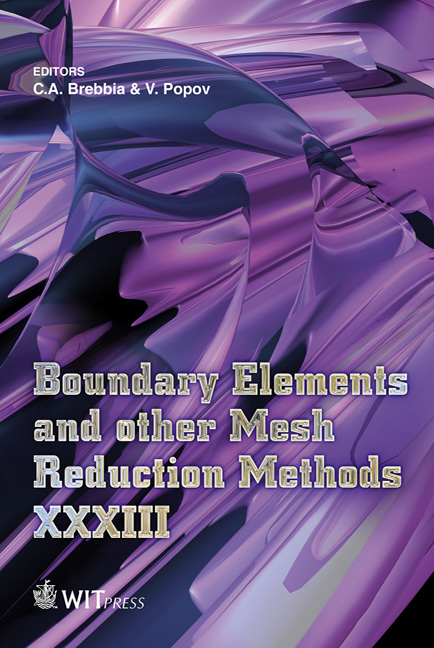A Shape Sensitivity Analysis Approach Based On The Boundary Element Method
Price
Free (open access)
Transaction
Volume
52
Pages
11
Page Range
121 - 131
Published
2011
Size
231 kb
Paper DOI
10.2495/BE110111
Copyright
WIT Press
Author(s)
T. Matsumoto, T. Takahashi, K. Shibata & T. Yamada
Abstract
A revised shape design sensitivity formulation is presented for elastostatic problems based on the adjoint method and the boundary element method. The objective function is assumed as a functional consisting of the boundary quantities and those given at some finite number of points in the domain of the solid. The gradient of the objective function is derived and an adjoint state is introduced so that the unknown sensitivity coefficients of the displacement and traction on the boundary and in the domain are eliminated from the gradient expression. Since the original boundary value problem and the adjoint problem are governed by the same differential equations and the boundary condition types, and also the derived sensitivity formulation is expressed with only the boundary integrals and the quantities at some discrete points in the domain, the boundary element method can be used as the effective computational tool. Also, the recent development of the fast-multipole boundary element method enables a large-scale shape optimization analysis of complicated structures. The validity of the derived formulation is tested through some numerical example problems. Keywords: elastostatics, shape sensitivity, adjoint method, boundary element method, topology optimization. 1 Introduction Although the boundary element method (BEM) has an advantage of boundary only modeling, it has not become a popular simulation tool in engineering applications because it required high storage and computation costs. For shape and topology optimization problems, the finite element method (FEM) has widely been used as the computational method. However, following the development of
Keywords
elastostatics, shape sensitivity, adjoint method, boundary element method, topology optimization





